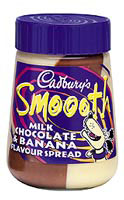Chocs away for the UK
UK chocolate manufacturers have long-been excluded from selling their products in continental Europe. Here, a look at the new ruling which will end this prohibition.

Following a 27-year fight to allow UK-produced chocolate to be sold on the continent, the European Parliament has finally agreed to the pleas of ex-pat chocoholics everywhere.
The struggle initially resulted from doubts expressed in France and Belgium as to whether the UK product could accurately be called chocolate. A landmark ruling will allow it – but requires manufacturers to allow no more than five per cent vegetable fat, as well as to clearly label their products “family milk chocolate”.
However, some manufacturers and design groups are rejecting the opportunity to take advantage of the enforced labelling change by repackaging products.
A Nestlé confectionery spokesman says: “We will change our packaging in accordance with the EU ruling, but it is not due for three years, so we have a bit of time to do our homework. We will be adapting back of pack details, but keeping existing branding and logos as intact as previously.”
A Cadbury’s spokesman adds: “We already export chocolate to the EU, but we’ve just had to change the recipe. This decision means it is a labelling issue for us and there are no plans to change the packaging.”
Despite the possible benefits, design groups active in the chocolate market are not urging chocolate producers to make packaging changes.
Pyott Design managing director James Pyott criticizes the latest EU requirement as “yet another indication of how petty and protectionist” Europe has become.
He accepts there should be a “harmonising of standards in labelling” but adds: “Europe has failed to realise that the interpretation of any product is part of a cultural heritage of any country.
“While Europe is an important market, our brands, unlike those within Europe, have the potential to become global brands. For this reason, it makes little sense to rebrand products,” states Pyott.
Design Bridge, which branded Terry’s Chocolate Orange Mini-Segments in July 1999, believes branding changes in addition to the labelling are likely to be minimal. Account director Moira Riddell says: “The ruling is less likely to affect branding and packaging, but it will depend on individual brands.”
Like Riddell, Siebert Head sales and marketing director Satkar Gidda does not foresee many branding changes as producers look for cohesion and consistency across the European market. The group has developed packaging for chocolate manufacturers such as Rowntree and Lindt, plus Cadbury’s Time Out and Wispa.
“In general, the market is so mature in confectionery that I don’t think there are design opportunities created from this rule change,” says Gidda. “Branding issues won’t change because manufacturers will want to maintain brand equity and create pan-European names. It defeats the object by having different names.”
He believes the preference for sweeter confectionery among youngsters will benefit UK chocolate manufacturers, but says continentals have expectations for “slightly higher quality” chocolate.
“Younger consumers will like the sweetness of UK chocolate, but Belgian stuff is absolutely fantastic. Therefore the continental manufacturers will have more opportunities by coming into the UK, and we may find tastes converging slightly,” he adds.
But Nine Yards director Simon Massey thinks some smaller manufacturers will see the ruling as a chance to create new branding.
He and fellow director Andy Kirk have worked with several market leaders, and developed packaging for Cadbury’s milk chocolate spreads.
“I suspect the big boys like Mars, Cadbury’s and Nestlé will probably carry on doing what they are already doing because they are trying to make Europe a single market, which is more cost effective,” says Massey. “But it is a chance for product differentiation and it would be foolish for manufacturers, especially smaller ones, to ignore it. You won’t suddenly find established brands doing it, but they might try new products or lesser known items with new branding,” he adds.
He says there will also be an “education issue” that manufacturers will need to address in explaining the benefits of milk in chocolate. “European consumers won’t understand the issue of milk chocolate. Cadbury’s communicates the goodness of milk brilliantly. It can be done on pack, through advertising, point-of-sale, competitions or public relations.”
Faesal Ghafoarkhan, a strategic consultant at Dutch design group Coleman Millford, warns that the quality of the produce, the market research and communication strategy are all essential to the successful integration of UK chocolate into Europe.
“Communications and insight into consumers are important as there are many different cultures and they will react in very different ways,” he explains. “Both the chocolate industry as a whole and individual manufacturers will need to promote UK chocolate.”
Though family milk chocolate may not be everyone’s first choice for the new labelling, it appears better than the original proposal of calling it vegelate. As one foreign office spokesman comments: “The ‘crumbliest, flakiest vegelate in the world’ doesn’t quite have the same ring to it.”
The EU ruling means:
– Harmonising the right to use vegetable fats other than cocoa butter in chocolate production throughout Europe.
– Up to five per cent of the finished product can consist of certain vegetable fats.
– Products containing these fats will require labelling saying: ‘also contains fats in addition to cocoa butter’ and ‘family milk chocolate’. This will be in effect across Europe.
-
Post a comment




